Planting and growth characteristics and cultivation techniques of Pearl Guava
Growth characteristics and cultivation techniques of pearl guava
1 Pearl guava planting growth characteristics
1.1 growth habit
Pearl guava vitality, germination is relatively early, branches and leaves developed, trunk is not obvious, more branches.
1.2 flowering habit
The flower bud of pearl guava is mixed flower bud, which can bloom all the year round. The new flower bud is located at the 3~5 nodes between leaf axils. Pearl guava blossoms intensively from March to April and July to September every year, and the flowering period from July to September is shorter, and the yield is lower than that from March to April.
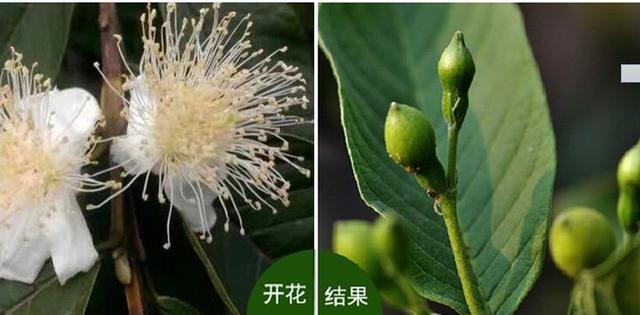
1.3 fruit characters
Pearl guava fruits are mostly pear-shaped or round, the weight of a single fruit can reach about 500g. When the fruit ripens, the flesh is milky white and the pericarp is yellow-green. Fruit seeds are very few, tender flesh, sweet and delicious, vitamin content is very rich.
1.4 early-bearing fertility
Pearl guava belongs to fast-growing economic forest. It can bloom and bear fruit seven or eight months after planting. The yield of each plant can reach 6~10kg in the current year and 11~15kg in the next year. The yield of pearl guava is higher every year and lasts until the peak period.
1.5 stress resistance
Pearl guava environmental adaptability is particularly strong, planting soil to sand and loam soil is appropriate, the requirements of fertile soil, adequate water, convenient transportation.
1.6 storability of
Pearl guava is suitable for cold storage. It can be stored for about 15 days at relative humidity of 85%~90% and temperature of 8~10℃. Under such conditions, the fruit can be preserved intact. However, when stored at normal temperature, the fruit is easy to deteriorate and air-dry seriously, which affects the quality of the fruit.
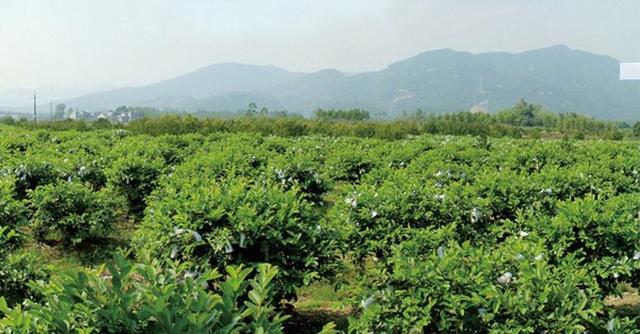
2 Cultivation techniques
2.1 garden selection
Pearl guava likes light, belongs to tropical fruit class, distribution area is very wide, as long as the monthly average temperature is above 15℃. Pearl guava is very sensitive to low temperature and easy to suffer from freezing damage. Therefore, corresponding measures should be taken to protect it from low temperature damage. Orchards should be selected in the air circulation, no frost fog and other microclimate zone, this kind of orchard is very beneficial to the growth of pearl guava.
2.2 colonization
The grafted seedlings of pearl guava should be selected for one year or more, and the suitable time for transplanting should be selected in spring and autumn every year. The mating interface should be well healed, the buds full, the branches thick and short, the branches with three or four branches and the roots intact. Such grafted seedlings are beneficial to the growth of pearl guava. Pearl guava belongs to fast-growing tree species, bearing fruit early, planting density of 2m×2m is appropriate. Before planting, basal fertilizer should be applied, planting holes of 70cm × 70cm × 70cm should be dug, calcium magnesium phosphate fertilizer 0.5kg and decomposed organic fertilizer 5.0kg should be applied in planting holes, and proper amount of soil should be filled to make mounds. After planting, the plants should be watered with sufficient water and covered with dry straw on the mound to maintain soil and water.
2.3 fertilizer and water management
Water and nutrients have great influence on the growth and fruit of pearl guava. Appropriate watering and fertilization should be carried out all year round, especially in the germination and fruit growth stages, so as to ensure sufficient water and nutrients supply and promote rapid growth of plants and rapid ripening of fruits. Young forest stage, should be more fertilization, watering, ensure that the number of fertilization, watering in two or three times a month; rich stage, fertilization, watering four or five times a year, to promote the full absorption of fertilizer. At the same time, trace element fertilizer can be added to improve the quality of fruits.
2.4 plastic management
2.4.1 Juvenile stage. Pruning is very important for the growth and fruiting of pearl guava. The main purpose of pruning is to cultivate the crown shape of pearl guava. After planting, when the seedlings grow to 50~70cm, select four or five branches with good growth and appropriate angle as the main branches reserved; when the germinated new branches grow to 30~40cm, cut off the branches to promote the growth of branches. Every 30 days, truncate the budding new branches to promote the growth of branches, repeat the above operation for about 1 year, until the number of branches reaches about 30.
2.4.2 Early results. Pearl guava can bear fruit after growing for about 3 years. At this time, the orchard has enough space to provide sufficient space for plant growth. During this period, pruning and shaping measures should not be taken. It should be allowed to grow, increase the amount of fruit in the early stage of production, and increase economic income. Pearl guava flowers generally grow in the third to fifth node of the new shoots, so this period of rapid growth of branches to be controlled, timely take measures to pick the heart.
2.4.3 The peak period of results. At the fourth year after planting, pearl guava reached its full fruiting stage. At this time, proper pruning should be carried out to remove redundant branches, retain main branches, dwarf plants and promote fruit bearing. Plant sealing treatment, should be a proper amount of pruning and picking, to ensure the growth of main branches, and remove those poor growth of sick branches, to ensure the rational distribution of fertilizer and water; plant sealing after pruning to heavy shear, heavy shear after germination of a large number of branches, at this time pruning should follow the principle of "weak trees less shear, strong trees heavy shear, leave moderate, thinning strength", so that the total number of final branches of the whole plant control in 210~260, while controlling the crown height does not exceed 2.5m.
2.4.4 Renewal period. After the full bloom period, the number of fruiting plants decreased gradually, the fruiting position increased gradually, and the growth of plants weakened. Old trees need to be pruned in time to make the plants renew naturally and maintain growth power. Generally in spring, the trunk is cut off about 100cm from the ground, and the auxiliary main branches are retracted to make the new buds germinate into new branches, retaining the ability to grow and hang fruits.
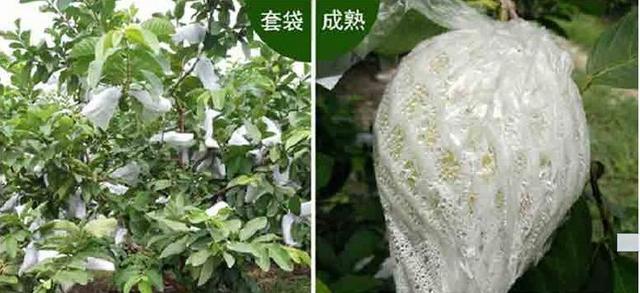
2.5 flower and fruit management
2.5.1 Thinning flowers and fruits. In order to ensure large and high quality fruit, flower thinning should be carried out according to the nutritional status of the tree. For summer and autumn fruit production, flower thinning is generally not advocated due to high temperature, more rain and low fruit setting rate during flowering. Fruit thinning should be carried out after small fruit stability; for winter and spring fruit production, the temperature is appropriate during flowering and the fruit setting rate is high, so flower thinning should be appropriate. Single flowers retained on shoots, florets thinned for double flowers, left and right flowers thinned for triple flowers. Fruit thinning is mainly to thin out diseased fruits, abnormal fruits, over-dense fruits, etc., leaving fruits according to the strength of tree body, branch tip thickness and leaf development status, strong tree body, thick branch tip, thick and dark green leaves are more left, and vice versa.
2.5.2 Fruit bagging. Fruit bagging is of great significance, not only can make the fruit free from pesticide and chemical fertilizer pollution, ensure the smooth surface of the fruit, but also can reduce the diseases and insect pests of pearl guava, not only improve the appearance of pearl guava, but also improve the fruit quality of pearl guava. Many years of experiments showed that fruits without bagging were more susceptible to diseases and insect pests, and pesticide residues were significantly higher than bagged fruits. After bagging, the fruit surface was smooth, no insect eye, good taste, no pesticide residue, fruit quality was obviously better than that of fruit without bagging.
2.6 pest control
Pearl guava is susceptible to diseases and insect pests throughout its growth period. The main diseases are soot and anthracnose, and the main pests are aphids, mealybugs and fruit borers. During the whole growth and development period of pearl guava, attention should be paid to the monitoring and forecasting of diseases and insect pests, timely detection and timely control of pearl guava diseases and insect pests. Based on the research on pearl guava diseases and insect pests for many years, it was found that 75% chlorothalonil 800 times solution or 70% thiophanate-methyl wettable powder should be used to control pearl guava diseases; in order to reduce the reproduction coefficient of moths, sex attractants should be used to trap male insects; in order to control aphids and mealybugs, 20% fenvalerate EC 1000 times solution should be used to control pearl guava diseases.
- Prev
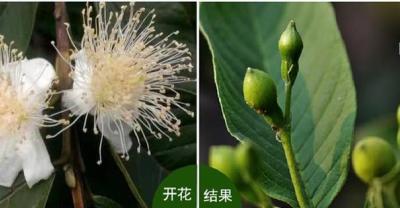
A good project to get rid of poverty and become rich-fennel calamus planting
First, what is fennel calamus? fennel calamus is a perennial herb of the genus Gladiolus in Araceae. Sichuan is called hand-washing incense, while Guizhou is called.
- Next
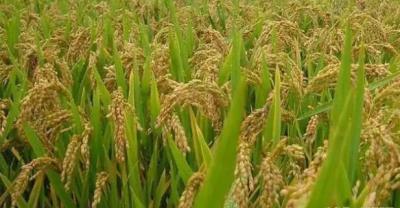
How to grow kiwifruit? Detailed explanation of planting methods of kiwifruit
Kiwifruit, a kind of fruit that is very helpful to cardiovascular disease, although its appearance is not so good-looking, its green flesh is still very attractive.
Related
- Fuxing push coffee new agricultural production and marketing class: lack of small-scale processing plants
- Jujube rice field leisure farm deep ploughing Yilan for five years to create a space for organic food and play
- Nongyu Farm-A trial of organic papaya for brave women with advanced technology
- Four points for attention in the prevention and control of diseases and insect pests of edible fungi
- How to add nutrient solution to Edible Fungi
- Is there any good way to control edible fungus mites?
- Open Inoculation Technology of Edible Fungi
- Is there any clever way to use fertilizer for edible fungus in winter?
- What agents are used to kill the pathogens of edible fungi in the mushroom shed?
- Rapid drying of Edible Fungi

